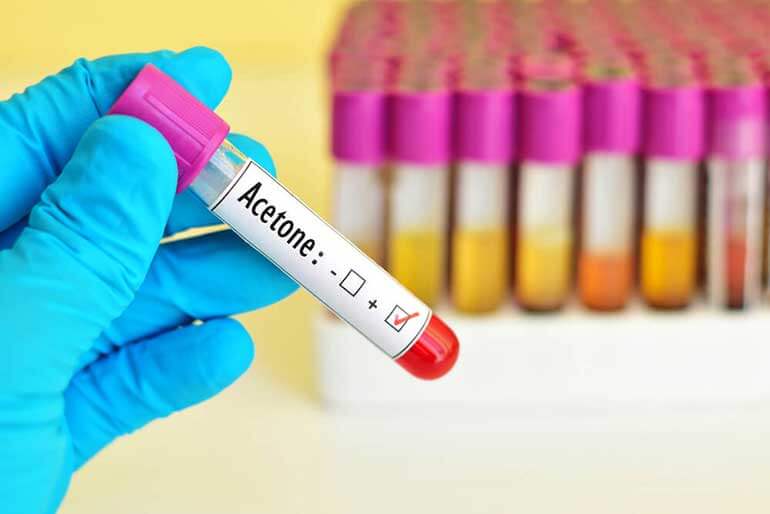Invokana ketoacidosis (DKA) is a serious and potentially fatal condition. Though diabetic keotacidosis isn’t uncommon in type 1 diabetics, it’s very rare in type 2 diabetes patients. Between March 2013 and May 2015, the FDA received 73 diabetic ketoacidosis reports from patients taking SGLT2 inhibitors. (That’s the same drug class that Invokana belongs to, along with Invokamet.) With so many Invokana patients reporting diabetic ketoacidosis adverse events, let’s take a closer look.
How Invokana Ketoacidosis Occurs
Between March 2013 and May 2015, the FDA received 73 Invokana ketoacidosis adverse event reports. How could Invokana cause DKA? First, see how SGLT2 inhibitors set off a chain reaction causing excessive ketone production (also known as blood acids).
1. SGLT2 Inhibitors and Hyperglycemia
“SGLT” stands for “sodium glucose co-transporter,” and the “2” is the transporter specifically responsible for glucose reabsorption in the kidneys. So blocking, or inhibiting, the SGLT2 means that glucose gets kicked out of the blood and into the urine. But the process of the kidneys sending too much glucose to the bladder is called hyperglycemia.
2. Urine and Hyperglycemia
Hyperglycemia occurs when the bladder receives an overload of glucose from the kidneys. The bladder can’t move glucose without more liquid. The body starts pulling liquid and nutrients from the blood to compensate. That leads to dehydration. While the blood lacks necessary liquid, it becomes more acidic and flows more slowly.
3. Ketone Production
Many people know that glucose, or sugar, provides the body with energy. What most people do not know is that the body can also take energy from ketones. When your body has too little glucose, it produces proteins called ketones. (This condition also affects type 1 diabetics who cannot properly process glucose.)
As the glucose is removed from the blood, the body starts producing ketones to make up the difference. This process is called ketosis. But ketones are acidic, and they even break down into a common paint thinner called acetone. When there are too many ketones in the blood, you basically have the building blocks for acetone paint thinner in your veins. Combine the acid with low levels of liquid, and you have the very real potential for blood clots.
4. Ketones to Ketoacidosis
Just like your body cannot handle too much sugar, it cannot function with too many ketones. When the ketones begin to break down, your blood acidity increases dramatically. Invokana ketoacidosis indicates excessive acid levels in your blood.
5. Cascading Side Effects
Invokana DKA can quickly lead to blood clots, which cause heart attacks and strokes. If you are experiencing symptoms of diabetic ketoacidosis, talk to a healthcare provider as soon as possible.
After You Suffer Invokana Ketoacidosis
If you or a loved one experienced Invokana ketoacidosis, you may qualify for a cash settlement from the manufacturer. Invokana lawsuits state that patients failed to receive adequate warnings about DKA risks, which is otherwise extremely rare in type 2 diabetics. Get a free Invokana claim evaluation today to see if you may qualify for a no-obligation legal consultation.
Related:Invokana Side Effects – Type 2 Diabetic Toe Amputations & Other Risks
Lori Polemenakos is Director of Consumer Content and SEO strategist for LeadingResponse, a legal marketing company. An award-winning journalist, writer and editor based in Dallas, Texas, she's produced articles for major brands such as Match.com, Yahoo!, MSN, AOL, Xfinity, Mail.com, and edited several published books. Since 2016, she's published hundreds of articles about Social Security disability, workers' compensation, veterans' benefits, personal injury, mass tort, auto accident claims, bankruptcy, employment law and other related legal issues.

